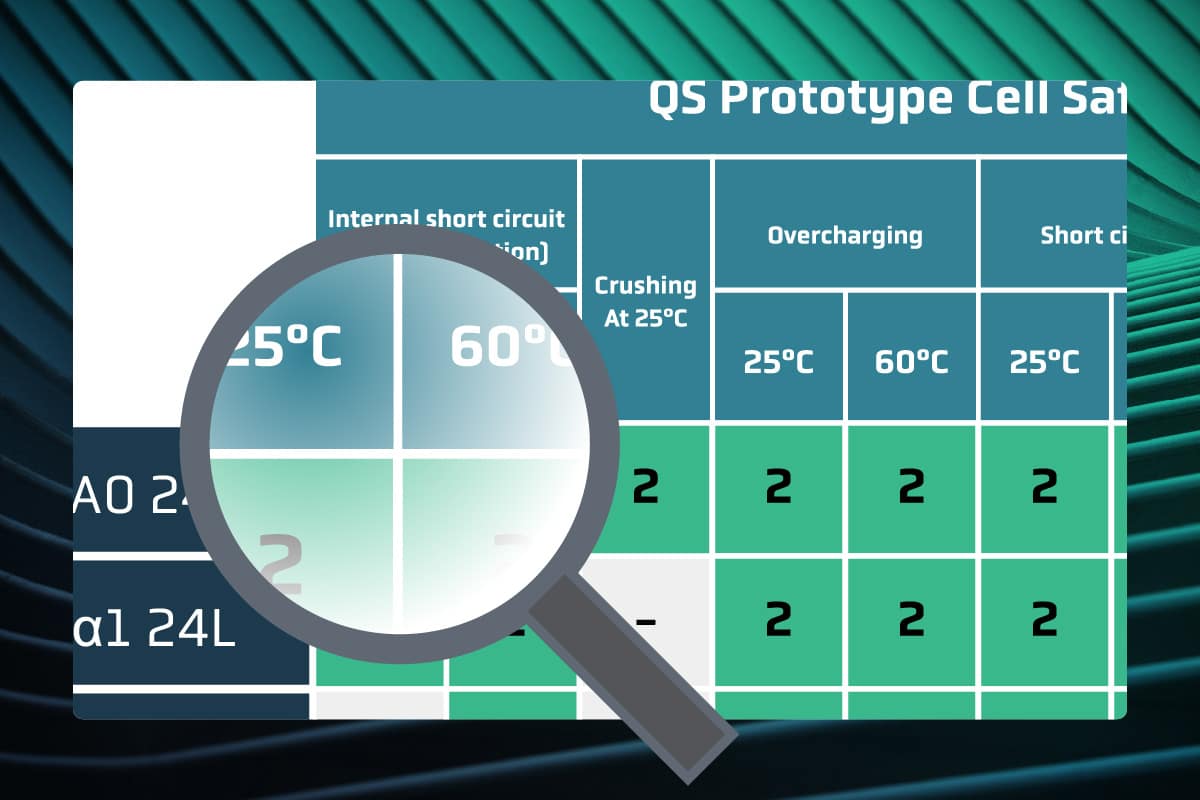
Understanding Battery Safety
As lithium-ion batteries have become ubiquitous, their safety risks have increasingly been a focus of public concern.
Although we use the word capacity in everyday conversation, it has a particular meaning to battery scientists, which can affect how we understand battery performance. In the simplest terms, a battery’s capacity describes how many electrons it can store for later use.
A battery’s capacity does not tell you the amount of energy it stores or the driving range it can deliver. Even with good capacity, it’s not possible to know how much energy the battery stores without knowing the voltage. This is because a higher voltage will deliver more energy for a given capacity. The math is simple:
Energy (Watt-hours) = Capacity (amp-hours) x Voltage (volts)
Let’s look at an example using the equation above — if a battery has a capacity of 3 amp-hours and an average voltage of 3.7 volts, the total energy stored in that battery is 11.1 watt-hours — 3 amp-hours (capacity) x 3.7 volts (voltage) = 11.1 watt-hours (energy). This is roughly enough to power a smartphone for a day[1]; thousands of such batteries make up an EV battery pack.

This diagram provides an analogy that illustrates the difference between capacity and energy. The capacity is represented by the amount of water at the top of the hill and the voltage by its elevation. Energy is extracted by the mill at the bottom of the hill. To know how much energy the mill will be able to use, you need to know both the altitude and the amount of water. In batteries, the principle is the same; voltage has as much influence on the energy of a battery as its capacity.
EVs may see their driving range fade after many charging cycles (this effect is measured as cycle life). This fade can be caused by factors such as repeated fast-charging or extreme temperatures. This is why QuantumScape subjects its batteries to tests over many hundreds of cycles, with fast charging speeds and typical operating conditions.
Predicting a battery’s useful lifetime, then, requires understanding how the battery loses the ability to store energy over time (or many cycles). This is why at QuantumScape, we always report the discharge energy retention in our cycle life tests. This is a measure of how much energy the battery can deliver each cycle, and in our battery, this fades very slowly: after 800 cycles, our battery can still deliver well more than 80% of the original amount of energy.
When cycle life tests only include capacity retention, not energy retention, this only tells half the story. Without also knowing how the voltage changes over time, it’s impossible to tell the difference between a battery that can last hundreds of cycles and a battery that will be almost useless after just a few dozen.
This matters because accelerating the electric vehicle revolution requires new batteries that can deliver improved performance for drivers while also withstanding many years of charging cycles. A battery that can pack more energy into an EV isn’t useful if that energy fades quickly in a few months, and a battery that can charge quickly isn’t useful if fast charging compromises the lifetime and value of the vehicle. So, the next time you see battery reporting on cycle-life performance, make sure to check whether it is actual energy or just capacity. If only capacity is reported, you don’t have everything you need to understand how that battery would fade over time in a real-world EV.
Forward-Looking Statements
This article contains forward-looking statements within the meaning of the federal securities laws and information based on management’s current expectations as of the date of this current report. All statements other than statements of historical fact contained in this article, including statements regarding the future development of QuantumScape’s battery technology, the anticipated benefits of QuantumScape’s technologies and the performance of its batteries, and plans and objectives for future operations, are forward-looking statements. When used in this current report, the words “may,” “will,” “estimate,” “pro forma,” “expect,” “plan,” “believe,” “potential,” “predict,” “target,” “should,” “would,” “could,” “continue,” “believe,” “project,” “intend,” “anticipates” the negative of such terms and other similar expressions are intended to identify forward-looking statements, although not all forward-looking statements contain such identifying words.
These forward-looking statements are based on management’s current expectations, assumptions, hopes, beliefs, intentions, and strategies regarding future events and are based on currently available information as to the outcome and timing of future events. These forward-looking statements involve significant risks and uncertainties that could cause the actual results to differ materially from the expected results. Many of these factors are outside QuantumScape’s control and are difficult to predict. QuantumScape cautions readers not to place undue reliance upon any forward-looking statements, which speak only as of the date made. Except as otherwise required by applicable law, QuantumScape disclaims any duty to update any forward-looking statements. Should underlying assumptions prove incorrect, actual results and projections could differ materially from those expressed in any forward-looking statements. Additional information concerning these and other factors that could materially affect QuantumScape’s actual results can be found in QuantumScape’s periodic filings with the SEC. QuantumScape’s SEC filings are available publicly on the SEC’s website at www.sec.gov.

As lithium-ion batteries have become ubiquitous, their safety risks have increasingly been a focus of public concern.

. In this blog article, we’ll look at battery safety testing and do a deep dive into a couple of key test results from energy-dense 24-layer QuantumScape prototype cells based on our Alpha-2 design.

As lithium-ion batteries have become ubiquitous, their safety risks have increasingly been a focus of public concern.

. In this blog article, we’ll look at battery safety testing and do a deep dive into a couple of key test results from energy-dense 24-layer QuantumScape prototype cells based on our Alpha-2 design.
Privacy Policy | Terms of Use
© 2024 QuantumScape Battery, Inc.
1730 Technology Drive, San Jose, CA 95110
info@quantumscape.com

Pamela Fong is QuantumScape’s Chief of Human Resources Operations, leading people strategy and operations, including talent acquisition, organizational development and employee engagement. Prior to joining the company, Ms. Fong served as the Vice President of Global Human Resources at PDF Solutions (NASDAQ: PDFS), a semiconductor SAAS company. Before that, she served in several HR leadership roles at Foxconn Interconnect Technology, Inc., a multinational electronics manufacturer, and NUMMI, an automotive manufacturing joint venture between Toyota and General Motors. Ms. Fong holds a B.S. in Business Administration from U.C. Berkeley and a M.S. in Management from Stanford Graduate School of Business.